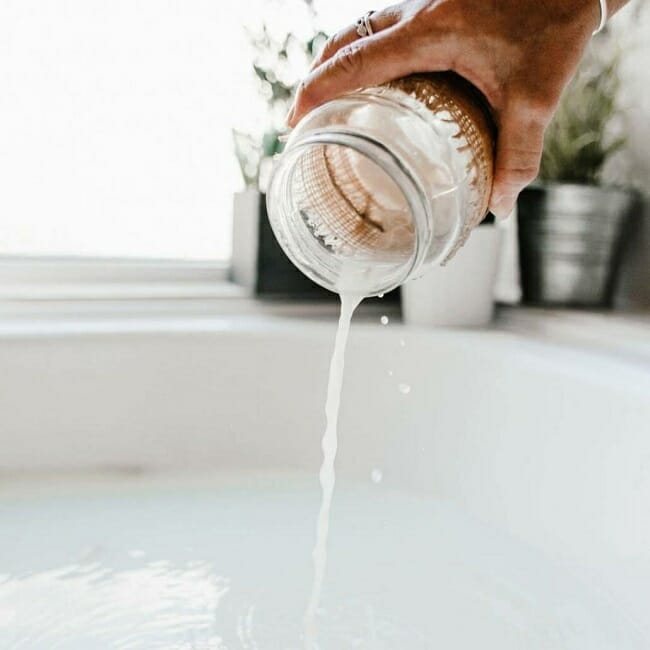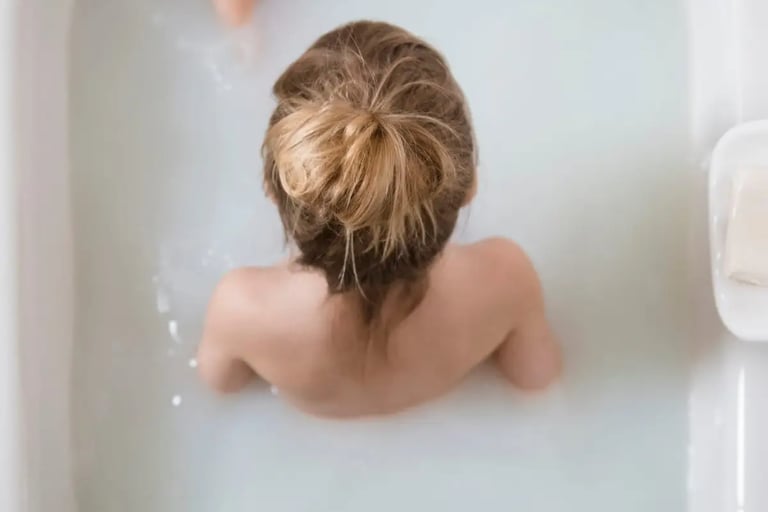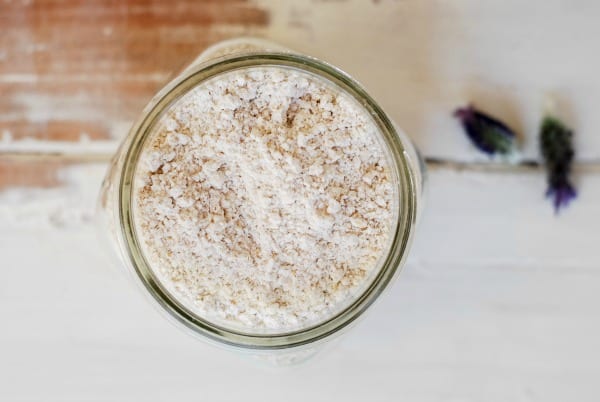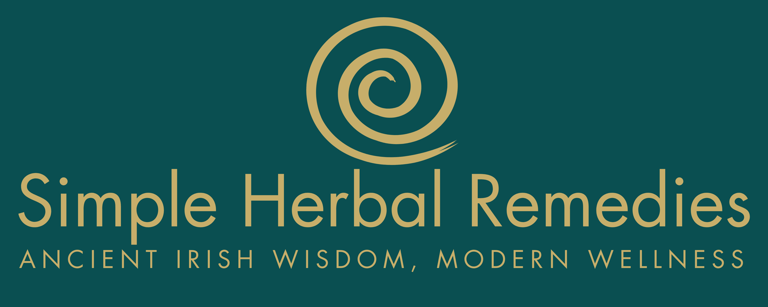Soothing Oat Bath Recipe for Irritated Skin | Oat bath for eczema
Learn how to make a soothing oat bath for eczema, for irritated, sensitive skin. This simple 2-ingredient recipe provides natural relief for eczema, nappy rash, and dry skin. Perfect for babies and adults.
SKINCARE RECIPES
6 min read


Soothing Oat Bath for Irritated Skin: The Simplest Natural Remedy
This post may contain affiliate links.
Looking for the gentlest, most effective way to soothe irritated skin? This oat bath recipe is so simple you'll wonder why you haven't been making it all along. Perfect for babies, children, and adults with sensitive or inflamed skin, this natural remedy has become an essential part of our bath time routine.
Why Oat Baths Work Wonders for Irritated Skin
Oats contain natural compounds called avenanthramides that provide powerful anti-inflammatory and skin-soothing properties. When steeped in water, oats release a milky substance rich in proteins, lipids, and vitamins that coat and protect irritated skin while reducing itching and inflammation. This makes oat baths particularly effective for conditions like eczema, dry skin, heat rash, nappy rash, and general skin irritation.
Important Note: While a single oat bath will provide immediate relief from irritation, consistent use is necessary to see improvement in chronic skin conditions. This should be used regularly as part of your skincare routine rather than as a one-time treatment.
What You'll Need
Ingredients:
Colloidal oats (or regular rolled oats)
Boiled, cooled water (approximately 500ml-1 litre)
Equipment:
Large pan or bowl
Strainer or muslin cloth (if using regular oats)
Wooden spoon for stirring
Small soft cloth or muslin for application (optional)
Understanding Your Oat Options
Colloidal Oats: These are finely ground oats that dissolve completely in water, creating a smooth, milky liquid. They're ideal because they won't clog drains and require no straining. You can find colloidal oats at pharmacies or health food stores.
Regular Rolled Oats: These work beautifully but need to be strained before use to prevent clogging your pipes. The larger oat pieces won't fully dissolve, so straining is essential.
How to Make Your Oat Bath Water
Step 1: Add your chosen oats to a large pan or bowl. Use approximately 50-100g of colloidal oats or 100-150g of regular oats per litre of water.
Step 2: Pour boiled, cooled water over the oats. The water should be warm but not hot—test it with your wrist to ensure it's comfortable temperature.
Step 3: Let the mixture steep for 15 minutes to 1 hour, stirring every 5-10 minutes. The longer you let it soak, the milkier and more concentrated the water becomes. Even 15 minutes will yield good results, but an hour is ideal for maximum benefits.
Step 4: If using regular oats, strain the mixture through a fine mesh strainer or muslin cloth to remove all oat pieces. This step is crucial to protect your plumbing.
Step 5: You're left with a lovely, milky-looking water that's incredibly gentle and soothing on irritated skin.
How to Use Your Oat Bath Water
For Full Bath Use: Add the entire batch of oat-infused water directly to a warm bath. Swirl it around to distribute evenly. Let your little one (or yourself) soak for 10-15 minutes, gently patting the water over affected areas.
For Targeted Application: Keep some oat water in a small bowl with a soft cleansing cloth or muslin. Use this to gently wash over particularly irritated or delicate areas, such as:
Neck creases in babies
Nappy rash areas
Eczema patches
Heat rash zones
Dry, flaky skin
For Daily Maintenance: Make a fresh batch and store it in a clean glass bottle in the refrigerator for up to 3 days. Use it as a gentle skin rinse after bathing or throughout the day on problem areas.
Why This Is My Go-To Bath Time Ritual
I make this oat bath every single bath time because it's that simple and that effective. There's something wonderful about knowing exactly what's going onto your baby's delicate skin—just pure, natural oats and water. No harsh chemicals, artificial fragrances, or questionable ingredients.
The milky water is incredibly gentle, making it safe for even the most sensitive skin. Whether dealing with nappy rash, eczema flare-ups, or simply wanting to maintain healthy skin, this oat bath provides consistent, reliable relief.
Tips for Best Results
Temperature Matters: Always ensure the water is comfortably warm, never hot. Hot water can further irritate sensitive skin.
Pat, Don't Rub: After the bath, gently pat skin dry rather than rubbing vigorously. This preserves the protective oat coating on the skin.
Follow with Moisturizer: While skin is still slightly damp, apply a gentle, fragrance-free moisturizer to lock in hydration.
Consistency is Key: Use oat baths regularly—daily if needed—rather than sporadically for best results with ongoing skin conditions.
Make It Fresh: While you can store oat water for a few days, fresh batches are most effective. It only takes minutes to prepare, so making it fresh each time is worthwhile.
Storage and Shelf Life
If you need to prepare oat water in advance, store it in a clean, sealed glass container in the refrigerator for up to 3 days. Always give it a good shake or stir before use, as some settling may occur. Discard if you notice any unusual smell or appearance.
Who Can Benefit from Oat Baths?
Oat baths are suitable for:
Newborns and infants with sensitive skin
Babies with nappy rash or cradle cap
Children with eczema or dry skin
Adults with psoriasis or contact dermatitis
Anyone with sunburned or irritated skin
People with chickenpox or other itchy skin conditions
Those with sensitive skin who react to commercial bath products
When to See a Healthcare Professional
While oat baths are wonderfully soothing, certain skin conditions require medical attention. Consult a dermatologist or healthcare provider if you notice:
Skin conditions that worsen despite regular oat bath use
Signs of infection (increased redness, warmth, pus, or fever)
Severe or spreading rashes
Skin conditions that significantly impact quality of life
Any concerns about your baby's skin health
Where to Source Your Ingredients
I source many of my ingredients from Amazon using Prime, which provides free and speedy delivery on numerous items plus access to Prime Video—a household favourite. Try Prime free for 30 days by signing up here and enjoy free delivery on your skincare ingredients.
Disclaimer: This information does not replace advice from a dermatologist or medical professional. Please seek medical advice if you suspect you have a dermal condition. Always perform a patch test before using new ingredients, especially on babies and children with sensitive skin.
Affiliate Disclosure: This post may contain affiliate links at no extra cost to you. These links allow us to share products we authentically recommend and use, while supporting our content through a small commission.




FAQS
Q: How often should I give my baby an oat bath? A: For babies with eczema or chronic skin irritation, oat baths can be used daily. For general skin maintenance, 2-3 times per week is sufficient.
Q: Can I use regular oats instead of colloidal oats? A: Yes, regular rolled oats work well, but you must strain the mixture thoroughly before adding to the bath to prevent clogging your drains.
Q: How long should you soak in an oat bath? A: 10-15 minutes is ideal for maximum benefit. The oat compounds need time to coat and soothe the skin.
Q: Are oat baths safe for newborns? A: Yes, oat baths are generally safe for newborns and are often recommended by pediatricians for various skin conditions. Always consult your healthcare provider first.
Q: Will oat baths clog my drain? A: If you use colloidal oats or properly strain regular oats, they won't clog drains. Never add unstrained whole oats directly to the bath.
Q: Can oat baths help with nappy rash? A: Yes, the anti-inflammatory properties of oats can help soothe nappy rash. Use the oat water with a soft cloth to gently cleanse the affected area.
Q: How long does oat bath water last? A: Fresh is best, but you can store prepared oat water in the refrigerator for up to 3 days in a sealed container.
Q: Can adults use oat baths? A: Absolutely! Oat baths are beneficial for anyone with sensitive, dry, or irritated skin, regardless of age.
Q: Do oat baths actually work for eczema? A: Yes, numerous studies have shown that colloidal oatmeal baths can reduce eczema symptoms, including itching, dryness, and inflammation.
Q: Can I add anything else to the oat bath? A: For very sensitive skin, keep it simple with just oats and water. Once you know your skin tolerates oats well, you can add gentle ingredients like chamomile tea.
